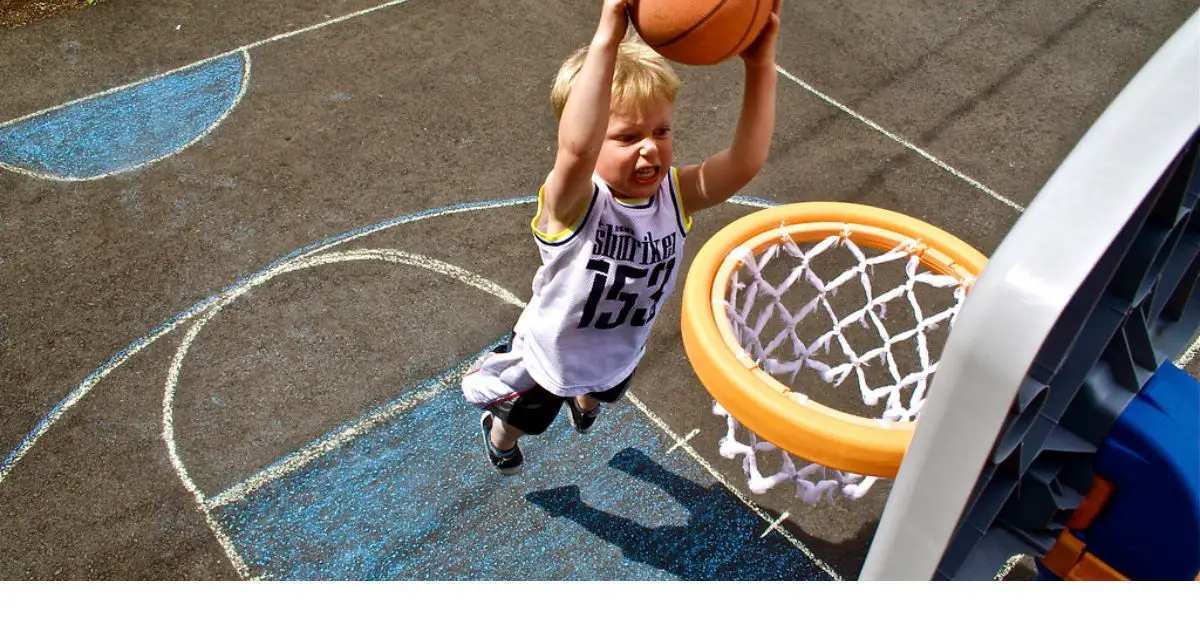If you’re looking for a way to spice up your basketball game, installing a basketball hoop on your trampoline might be just what you need. With a trampoline basketball hoop, you can experience a whole new level of excitement and challenge while playing basketball. But before you can start playing, you need to install the hoop on your trampoline properly.
Installing a basketball hoop on a trampoline requires some planning and preparation. There are different types of trampolines, and each requires a different approach to installing the basketball hoop. You’ll also need the right tools and equipment to make sure the hoop is properly secured and safe for use.
In this guide, we will provide you with a step-by-step guide on how to install a basketball hoop on different types of trampolines, including usual trampolines, Springfree trampolines, and in-ground trampolines. We’ll also cover safety precautions to take when playing trampoline basketball, so you can enjoy the game while staying safe.
How to install a basketball hoop on the trampoline: To install a basketball hoop on a trampoline, you will need to purchase a compatible basketball hoop kit. Follow the manufacturer’s instructions to assemble the hoop and attach it to the trampoline net or enclosure. Ensure that the hoop is securely fastened and the netting is properly tightened. Always supervise players while using the hoop to prevent injury.
The Benefits of a Trampoline Basketball Hoop
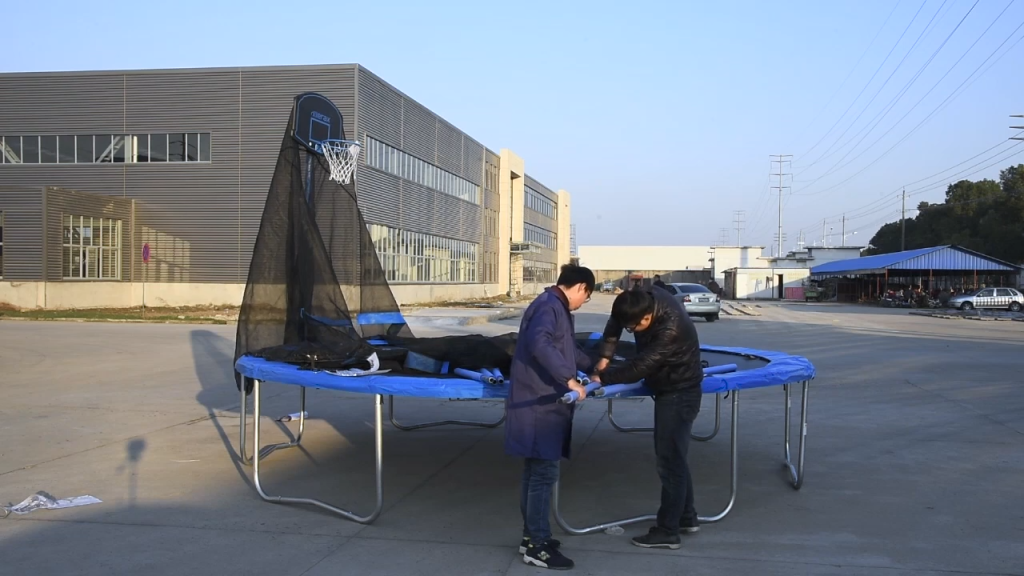
A trampoline basketball hoop is a unique type of basketball setup that incorporates a trampoline underneath the basketball hoop. The trampoline provides an extra boost of height and bounce, allowing players to perform impressive dunks and other aerial maneuvers that would be difficult or impossible to execute on a standard basketball court.
In addition to being a fun and exciting way to play basketball, there are many benefits to using a trampoline basketball hoop. For one, it can help players develop their jumping and aerial skills, as they learn to time their movements and control their bodies in mid-air.
This can be especially helpful for young athletes who are still developing their physical coordination and agility.
Another benefit of trampoline basketball is that it can provide a low-impact workout that is easier on the joints than traditional basketball. This can be beneficial for older or injured players who still want to play basketball without putting too much strain on their bodies.
Overall, a trampoline basketball hoop is a unique and exciting way to play basketball that can provide a range of physical and mental benefits to players of all ages and skill levels.
Different types of trampoline basketball hoops
Trampoline basketball hoops come in a variety of types and styles, each offering unique features and benefits. Here are some of the most common types of trampoline basketball hoops:
Portable trampoline basketball hoop: This type of hoop is designed for easy setup and mobility, making it ideal for those who want to move it around their backyard or take it to the park. It typically has a base that can be filled with water or sand to provide stability.
In-ground trampoline basketball hoop: As the name suggests, this type of hoop is installed directly into the ground for a permanent setup. It offers increased stability and durability but requires more effort and cost to install.
Adjustable trampoline basketball hoop: This type of hoop allows you to adjust the height of the rim, making it suitable for players of different ages and skill levels.
Dual shot trampoline basketball hoop: This type of hoop features two separate rims and backboards, allowing two players to play simultaneously. It is a great option for families or friends who want to play together.
Slam dunk trampoline basketball hoop: This type of hoop is designed for players who want to perform impressive dunks and other aerial maneuvers. It typically has a larger jumping surface and a higher bounce, providing players with the height and momentum needed to execute difficult tricks.
Types of Trampolines
Round Trampolines: These are the most common type of trampoline and are typically smaller than other trampoline types. They come in a range of sizes, from 6ft to 16ft, and are ideal for children and beginners. They have a circular design that allows for an even distribution of weight, making them safe and stable. However, due to their smaller size, they may not be suitable for playing basketball, especially for players who want to perform aerial maneuvers.

Rectangular Trampolines: These trampolines are typically larger and provide a more significant jumping surface than round trampolines. They have a rectangular shape that allows for more extended and higher jumps, making them ideal for performing aerial maneuvers.
The larger size and increased height also make them suitable for basketball, allowing players to perform impressive dunks and other aerial tricks.
Square Trampolines: Square trampolines are similar to rectangular trampolines in size and shape, but their design allows for a more even distribution of weight. This makes them safe and stable, even with multiple players jumping simultaneously.
They are also suitable for basketball, providing ample space for players to jump and maneuver.
In-Ground Trampolines: In-ground trampolines are installed into the ground, providing a seamless transition from ground to trampoline. They are more aesthetically pleasing than above-ground trampolines and are also safer, as they are closer to the ground.
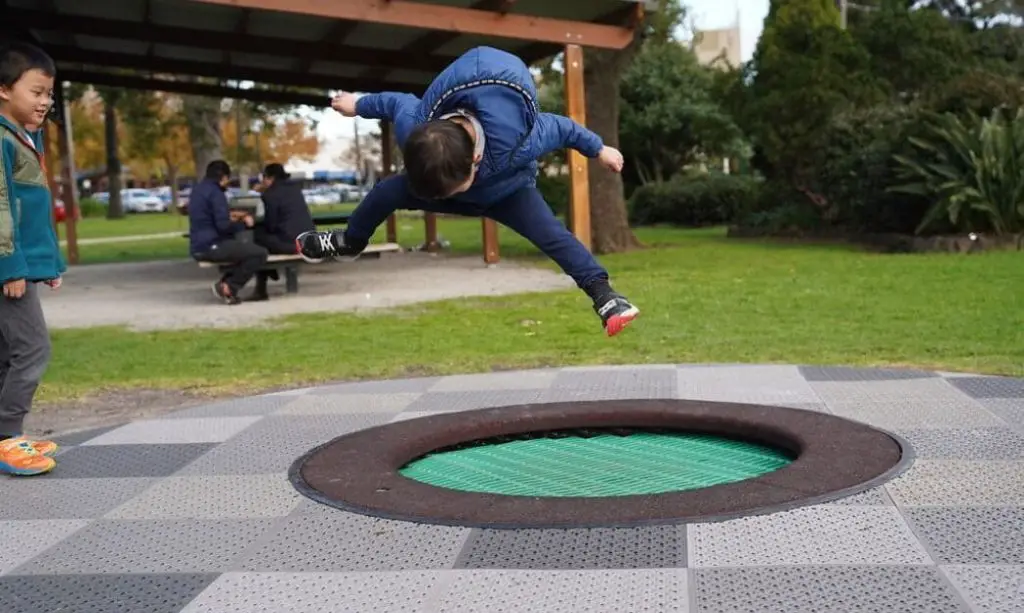
They are suitable for basketball but require additional considerations for installation, such as digging a hole and securing the trampoline.
Considerations When Choosing a Trampoline for Basketball
Size: When choosing a trampoline for basketball, the size of the trampoline is an essential consideration. The size should be appropriate for the number of players who will be playing, as well as the space available in your backyard or recreational area. A larger trampoline provides more space for players to jump and maneuver, but may also require more space.
Durability: The trampoline should be durable and able to withstand the weight and impact of multiple players jumping and performing aerial maneuvers. Look for trampolines with a sturdy frame, high-quality springs, and a durable mat.
Safety Features: Safety should always be a top priority when choosing a trampoline for basketball. Look for trampolines with safety features such as safety nets, padded frames, and non-slip surfaces.
Height: The height of the trampoline is also an important consideration, especially for basketball players who want to perform aerial tricks and dunks. A trampoline with a higher bounce provides more height and momentum for players, but may also require more safety precautions.
How to Install Basketball Hoop on the Trampoline?
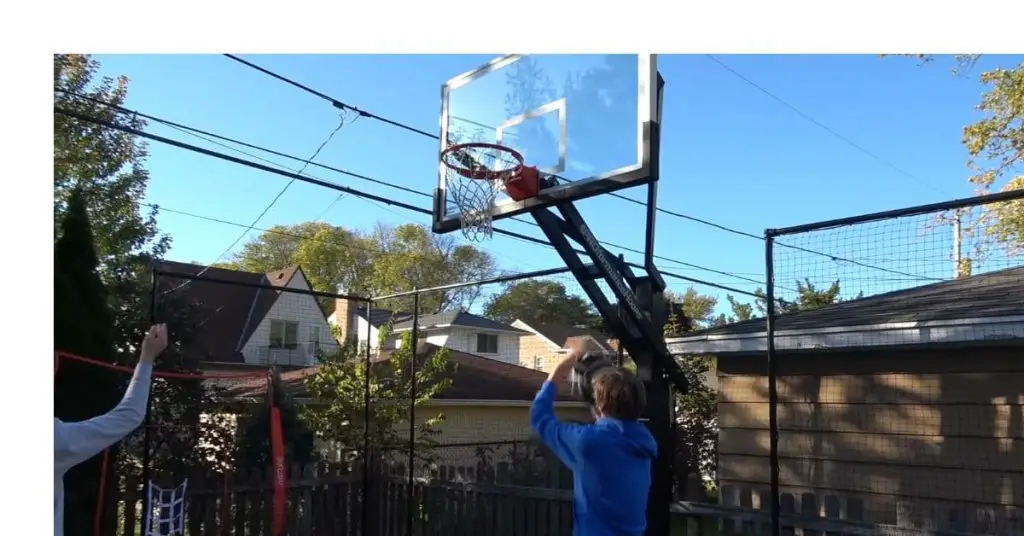
Installing a basketball hoop on a trampoline can be a fun addition to your backyard setup. Here are the steps to follow to install a basketball hoop on your trampoline:
Tools Needed for Installation
Installing a trampoline requires some basic tools and equipment. Here is a comprehensive list of the tools needed for installation, along with an explanation of each tool and its purpose.
Measuring Tape: A measuring tape is essential for ensuring that your trampoline is installed in the right location and that it is level. You will need to measure the area where the trampoline will be installed to ensure that it will fit properly.
Level: A level is used to ensure that the trampoline is installed on a flat surface. It is important to have a level installation to prevent injuries and to ensure that the trampoline operates correctly.
Wrenches: Depending on the type of trampoline you are installing, you may need a set of wrenches to tighten nuts and bolts. A socket wrench set with both metric and standard sizes is useful to have.
Screwdrivers: A set of screwdrivers will be necessary to install the screws and bolts that hold the trampoline together. Make sure you have both Phillips and flathead screwdrivers of different sizes.
Rubber Mallet: A rubber mallet is useful for tapping the legs of the trampoline into place. A rubber mallet will prevent damage to the trampoline frame while also ensuring that the legs are secure.
Spring Puller: A spring puller is used to attach the springs to the frame of the trampoline. It is designed to help you pull the springs and hold them in place while you attach them to the frame.
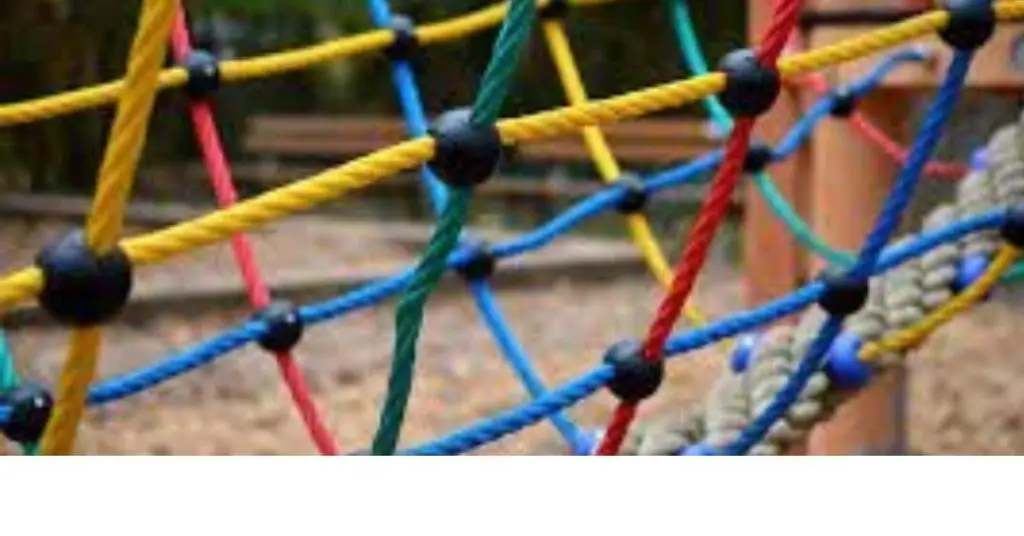
Safety Enclosure Tools: If your trampoline has a safety enclosure, you may need specific tools to install it properly. For example, you may need a ladder or a specific tool to attach the netting to the frame of the trampoline.
Pliers: Pliers are useful for holding nuts and bolts in place while you tighten them with a wrench. They are also useful for removing springs or other small parts.
Utility Knife: A utility knife is useful for cutting the padding or mat of the trampoline if it needs to be trimmed to fit properly.
Power Drill: Depending on the type of trampoline you are installing, you may need a power drill to attach the screws and bolts that hold the trampoline together. A drill bit set with a variety of sizes is helpful to have.
Safety Glasses: Installing a trampoline can be dangerous, so it’s important to wear safety glasses to protect your eyes from flying debris or other hazards.
Gloves: Gloves can protect your hands from cuts and scrapes while you’re handling metal parts and tools.

Step-by-Step Guide: Installing a Basketball Hoop on a Usual Trampoline
Installing a basketball hoop on a trampoline can be a fun and challenging project for anyone who loves basketball. With the right tools and some patience, it’s possible to turn your trampoline into a mini basketball court.
In this step-by-step guide, we will walk you through the process of installing a basketball hoop on a usual trampoline, including safety precautions to consider during installation.
Step 1: Choose the Right Location
The first step in installing a basketball hoop on a trampoline is to choose the right location. You will need to find a spot on the trampoline where the hoop can be installed without interfering with the safety enclosure or the springs. Make sure that the area is level and free from any obstacles that could interfere with your game.
Step 2: Assemble the Basketball Hoop
The next step is to assemble the basketball hoop. Most trampoline basketball hoops come with detailed instructions and all the necessary hardware, so follow the instructions carefully to avoid any mistakes. Be sure to tighten all bolts and nuts securely to ensure that the basketball hoop is stable and safe to use.
Step 3: Attach the Hoop to the Trampoline
Once the basketball hoop is assembled, it’s time to attach it to the trampoline. Start by placing the basketball hoop in the desired location on the trampoline. Then, use the provided clamps to attach the hoop to the trampoline frame. Make sure that the clamps are tight and secure to prevent the hoop from moving or falling off during use.
Step 4: Install the Backboard
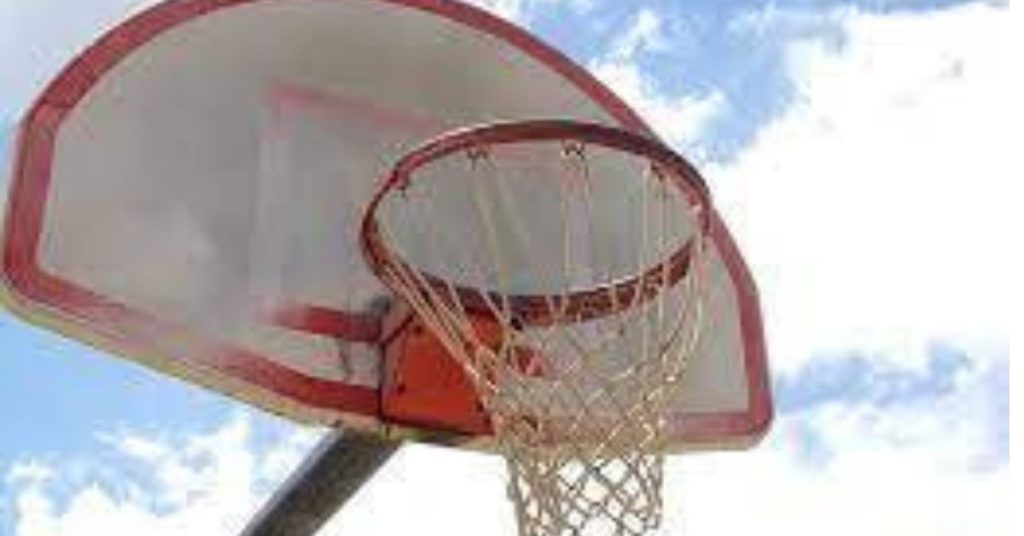
After the hoop is attached, it’s time to install the backboard. The backboard should be installed on the opposite side of the trampoline from the safety enclosure. Use the provided hardware to attach the backboard to the hoop. Make sure that the backboard is level and securely attached to the hoop.
Step 5: Install the Net
The next step is to install the net. Most trampoline basketball hoops come with a net, but if yours doesn’t, you can purchase one separately. The net should be attached to the hoop using the provided hardware. Make sure that the net is securely attached and that it hangs straight and even.
Step 6: Test the Basketball Hoop
Before using the basketball hoop, it’s important to test it to make sure that it is stable and safe to use. Try hanging on the rim or gently bouncing the ball off the backboard to ensure that everything is securely attached. If the hoop feels loose or unstable, double-check the clamps and hardware to make sure that everything is tight and secure.
Safety Precautions to Consider During Installation
- Always read and follow the instructions carefully to avoid any mistakes.
- Wear safety glasses and gloves to protect yourself from flying debris or sharp edges.
- Use a ladder or step stool if necessary to reach high areas.
- Do not attempt to install the basketball hoop in windy or wet conditions.
- Use caution when handling heavy or awkward parts.
- Never leave children unsupervised while using the trampoline basketball hoop.
Step-by-Step Guide: Installing a Basketball Hoop on a Springfree Trampoline
Installing a basketball hoop on a Springfree trampoline can provide endless hours of fun for both kids and adults. While it may seem daunting at first, with the right tools and a little bit of patience, it can be done easily.
we will walk you through the step-by-step process of installing a basketball hoop on a Springfree trampoline.
Step 1: Gather the Tools and Materials
Before you begin, it is important to make sure you have all the necessary tools and materials. The following tools will be required:
- Power drill with Phillips head bit
- Measuring tape
- Level
- Scissors
- Springfree trampoline hoop
- Hardware kit (provided with hoop)
Step 2: Measure and Mark the Center of the Trampoline

Using a measuring tape, find the center of the trampoline and mark it with a pencil. This will be the location where the basketball hoop will be installed. Use a level to ensure the mark is perfectly centered.
Step 3: Prepare the Hoop
Take the Springfree trampoline hoop and lay it out flat. Locate the four metal brackets that attach to the hoop and the four bolts that are included in the hardware kit.
Step 4: Attach the Brackets to the Hoop
Using a power drill with a Phillips head bit, attach the four brackets to the back of the basketball hoop. Be sure to line up the holes in the brackets with the corresponding holes on the hoop. Tighten the bolts securely to ensure the brackets are firmly attached.
Step 5: Attach the Hoop to the Trampoline
With the brackets attached to the hoop, you are now ready to attach the basketball hoop to the trampoline. Place the hoop in the center of the trampoline, lining up the brackets with the mark you made in Step 2.
Next, use a power drill to attach the brackets to the trampoline mat. Insert the bolts through the holes in the brackets and the trampoline mat. Tighten the bolts securely, ensuring that the brackets are firmly attached to the trampoline.
Step 6: Install the Net
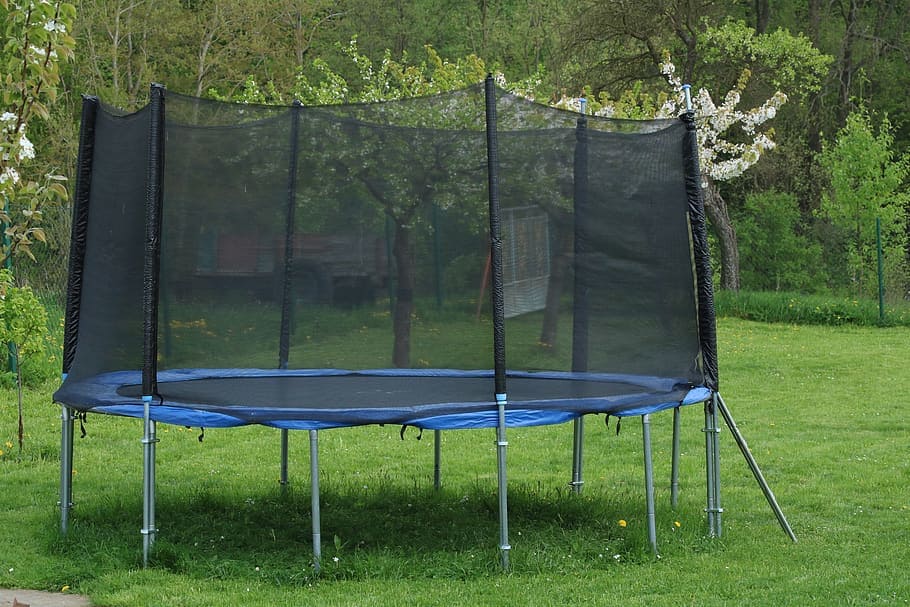
The final step is to install the basketball net. Take the net and attach it to the hooks on the basketball hoop. Use a pair of scissors to trim any excess netting.
Step 7: Safety Precautions
When installing a basketball hoop on a Springfree trampoline, safety should always be a top priority. Be sure to follow these safety precautions:
- Always have an adult supervise during installation.
- Use caution when working with power tools.
- Wear safety glasses to protect your eyes from flying debris.
- Make sure the trampoline is on level ground and properly assembled before installing the basketball hoop.
- Ensure that the brackets are securely attached to both the hoop and the trampoline mat.
3
Step-by-Step Guide: Installing a Basketball Hoop on an In-Ground Trampoline
In-ground trampolines are becoming increasingly popular due to their sleek and unobtrusive design. They are installed in a shallow hole in the ground, making them less of an eyesore than traditional above-ground trampolines. If you have an in-ground trampoline and want to add a basketball hoop to it, this step-by-step guide will walk you through the process.
Before you begin, make sure you have all the necessary tools and equipment. You will need:
- A basketball hoop designed for in-ground trampolines
- A ladder
- A shovel
- A level
- Concrete mix
- Water
- A wheelbarrow or large mixing container
- A trowel
- A rubber mallet
- Safety goggles
- Work gloves
Step 1: Choose the Right Location for Your Basketball Hoop
The first step is to choose the right location for your basketball hoop. Look for an open space that is clear of any obstructions, such as trees or power lines. Make sure there is plenty of room around the trampoline so that players have enough space to move around.
Step 2: Dig the Hole
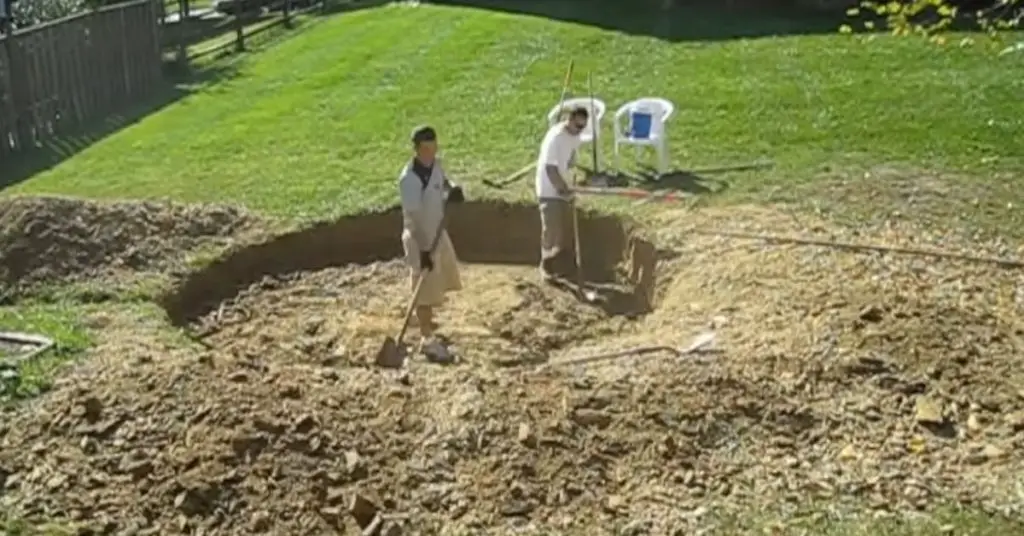
Using a shovel, dig a hole for the basketball hoop. The size of the hole will depend on the size of your basketball hoop, but it should be deep enough to provide a stable foundation for the hoop. Typically, the hole should be about 2 feet deep and 2 feet wide.
Step 3: Level the Bottom of the Hole
Use a level to ensure that the bottom of the hole is level. This is important to ensure that the basketball hoop is stable and won’t tilt or wobble during play.
Step 4: Mix the Concrete
Mix the concrete in a wheelbarrow or large mixing container according to the instructions on the package. You will need enough concrete to fill the hole to about 6 inches from the top.
Step 5: Set the Anchor
Place the anchor for the basketball hoop in the center of the hole. The anchor should be level with the top of the hole.
Step 6: Pour the Concrete
Carefully pour the concrete into the hole around the anchor. Use a trowel to smooth the surface of the concrete and ensure that it is level.
Step 7: Attach the Basketball Hoop
Once the concrete has set, attach the basketball hoop to the anchor. Follow the manufacturer’s instructions for attaching the hoop. Typically, you will need to use a rubber mallet to secure the hoop to the anchor.
Step 8: Test the Stability
Once the basketball hoop is attached, test the stability of the hoop by giving it a few gentle shakes. If it wobbles or tilts, you may need to adjust the anchor or add more concrete to the hole.
Step 9: Safety Precautions
Remember to take safety precautions when installing a basketball hoop on an in-ground trampoline. Wear safety goggles and work gloves to protect yourself from concrete and other debris. Also, make sure that the area around the trampoline is clear of any obstacles or hazards, such as rocks or sharp objects.
Rules and Precautions for Trampoline Basketball
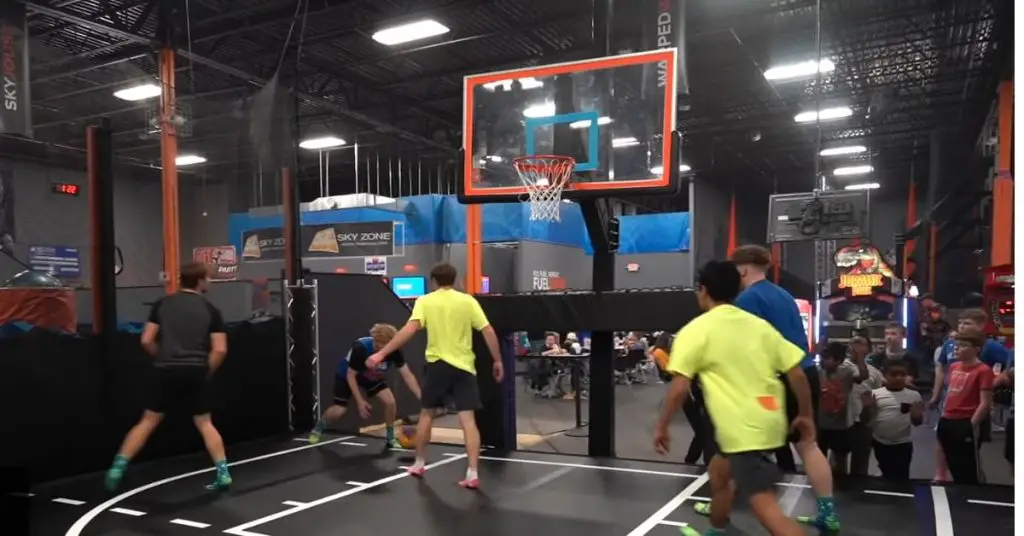
Trampoline basketball can be an exciting and fun way to play the classic game of basketball, but it is important to follow certain rules and precautions to ensure safety and prevent accidents and injuries. Whether you are a beginner or an experienced player, these guidelines can help you stay safe while playing trampoline basketball.
Supervision and Safety Guidelines
Before playing trampoline basketball, it is important to make sure that all players are aware of the safety guidelines and rules. It is also important to have adult supervision, especially for children who are playing.
Proper Attire
Make sure to wear appropriate athletic shoes and clothing. Avoid wearing jewelry, watches, or other accessories that can get caught on the trampoline or basketball hoop.
Warm-Up
Always warm up before playing to prevent injuries. Stretching can help loosen up your muscles and prepare your body for physical activity.
Proper Bouncing
Make sure to bounce in the center of the trampoline, away from the edges, and keep your bouncing controlled. Avoid double bouncing or bouncing too high, as it can increase the risk of injury.
No Flips or Somersaults
Do not attempt any flips or somersaults while playing trampoline basketball, as it can be dangerous and increase the risk of injury.
One Player at a Time
To prevent collisions and injuries, only one player should be on the trampoline at a time. Avoid overcrowding the trampoline and allow each player to take turns.
Control the Ball
Always control the ball and avoid throwing it too hard, as it can cause injuries to other players. Make sure the ball is properly inflated and not overinflated.
Remove Hazardous Objects
Make sure there are no hazardous objects around the trampoline that can cause injuries, such as rocks or sharp objects.
Age and Weight Limits
Trampoline basketball is not recommended for children under six years old or for players who exceed the weight limit of the trampoline.
Use a Safety Net
Consider using a safety net around the trampoline to prevent falls and accidents. This is especially important for younger children who may be less coordinated or experienced.
By following these rules and precautions, you can enjoy trampoline basketball safely and reduce the risk of accidents and injuries. Remember to always prioritize safety, have fun, and be respectful of other players while playing.
FAQs
Q.1 What is a trampoline basketball hoop?
A trampoline basketball hoop is a basketball setup that features a basketball hoop attached to a trampoline. It allows players to jump higher and perform aerial maneuvers that are difficult or impossible to execute on a standard basketball court.
Q.2 Can I install a basketball hoop on any type of trampoline?
No, not all trampolines are suitable for a basketball hoop installation. You need to make sure that your trampoline has a sturdy frame and meets the weight capacity requirements for the basketball hoop. Check with the manufacturer of your trampoline or the basketball hoop to confirm compatibility.
Q.3 What tools do I need to install a trampoline basketball hoop?
The required tools vary depending on the type of trampoline and basketball hoop. However, some common tools include a ladder, pliers, screwdrivers, wrenches, and a drill. Refer to the installation instructions for your specific model to determine the necessary tools.
Q.4 Can I play basketball on a trampoline alone?
It is recommended to play basketball on a trampoline with at least one other person for safety reasons. Playing alone can increase the risk of injury as there is no one to assist or monitor you.
Q.5 What are some safety precautions when playing basketball on a trampoline?
Always ensure that the trampoline is in good condition, and that there are no tears or damage to the surface or frame. Never attempt to perform dangerous stunts or maneuvers that exceed your skill level. It’s also essential to have a spotter present to monitor the game and ensure the safety of all players.
Q.6 What type of basketball should I use for a trampoline basketball hoop?
It is recommended to use a soft foam basketball that is specifically designed for trampoline basketball. These balls are lighter and have less bounce, reducing the risk of injury.
Q.7 Can I leave the basketball hoop attached to the trampoline permanently?
It is not recommended to leave the basketball hoop attached to the trampoline permanently. Removing the basketball hoop after each use can prevent damage to the trampoline surface and extend its lifespan.
Conclusion
In conclusion, adding a basketball hoop to a trampoline is a great way to enhance the fun and excitement of trampolining. There are different types of trampoline basketball hoops available in the market that can be installed on various types of trampolines. When selecting a trampoline for basketball, one should consider its size, weight limit, and safety features.
To install a basketball hoop on a trampoline, one would require some basic tools such as a drill, screws, and a ladder. The installation process involves securing the hoop and backboard to the trampoline frame, ensuring that the hoop is positioned correctly for optimal play.
Safety is a top priority when playing trampoline basketball. Rules and precautions should be followed, such as wearing proper attire and warm-up, no flips or somersaults, one player at a time, controlling the ball, removing hazardous objects, and adhering to age and weight limits. Additionally, using a safety net can prevent accidents and provide an added layer of protection.
Overall, installing a basketball hoop on a trampoline can provide hours of entertainment while improving coordination and fitness. By following proper safety guidelines and rules, trampoline basketball can be a fun and safe activity for everyone to enjoy.
We hope that this guide has helped you understand how to install a basketball hoop on a trampoline. If you have any questions, please don’t hesitate to ask by leaving a comment below!

